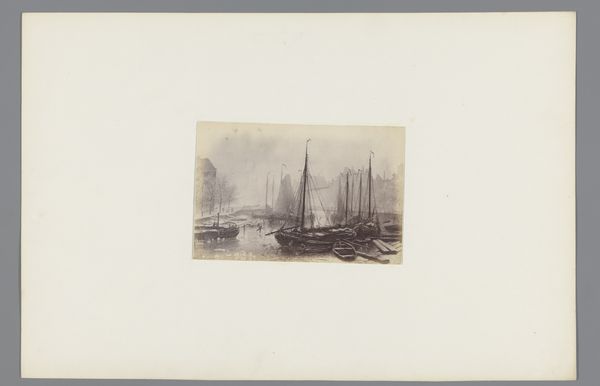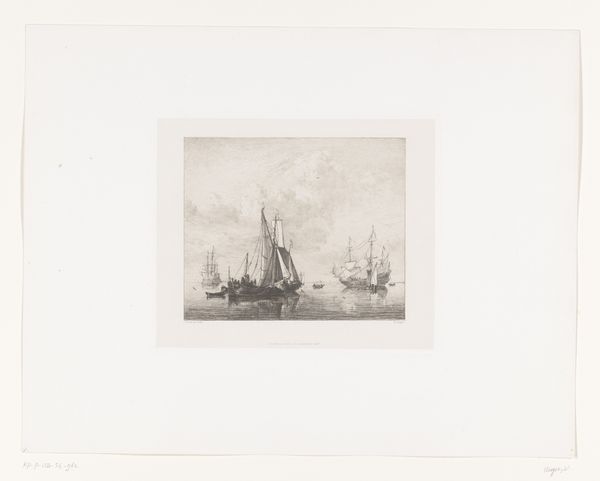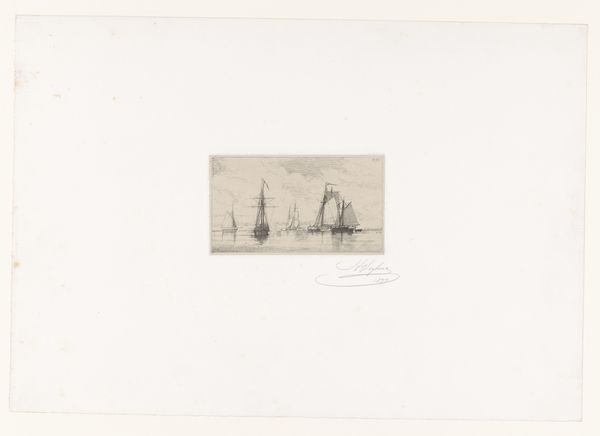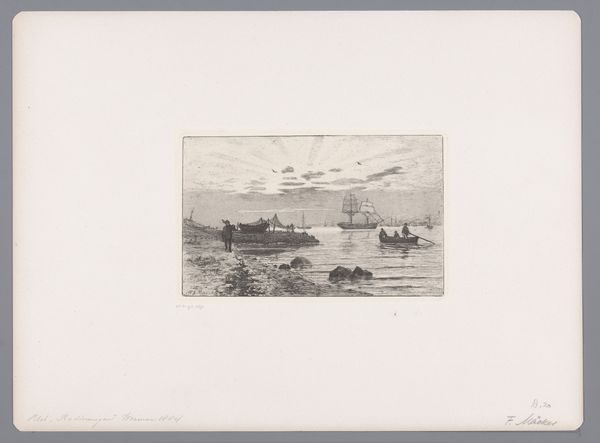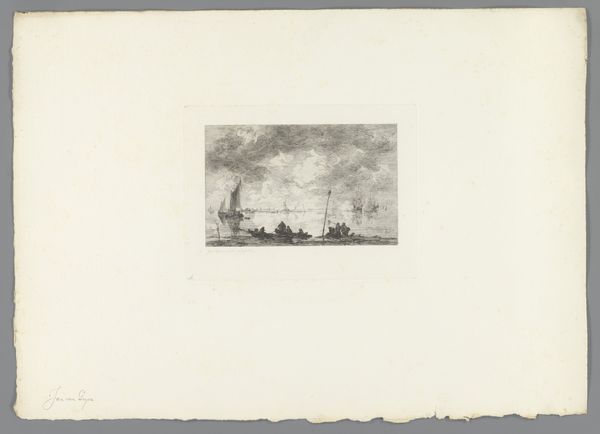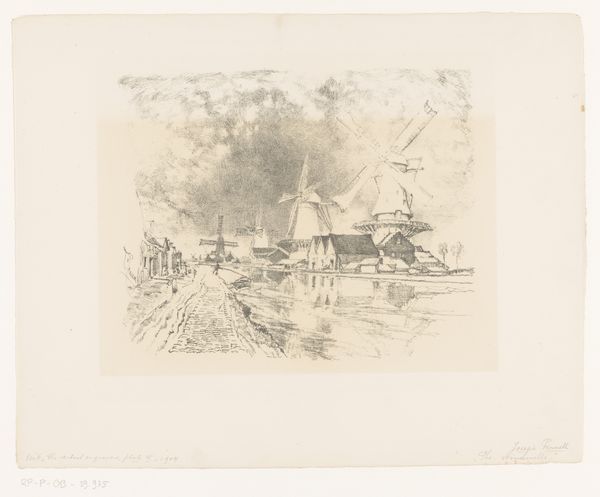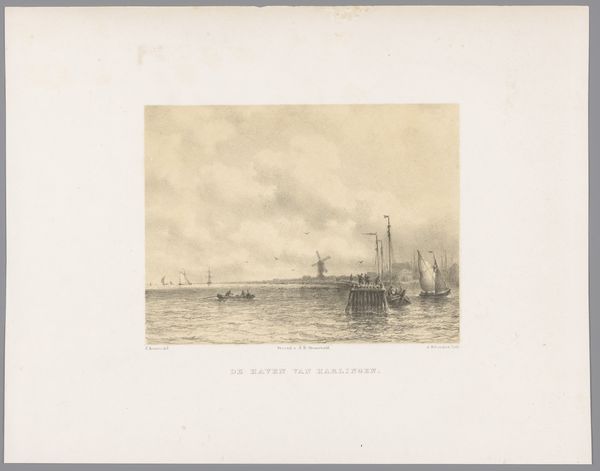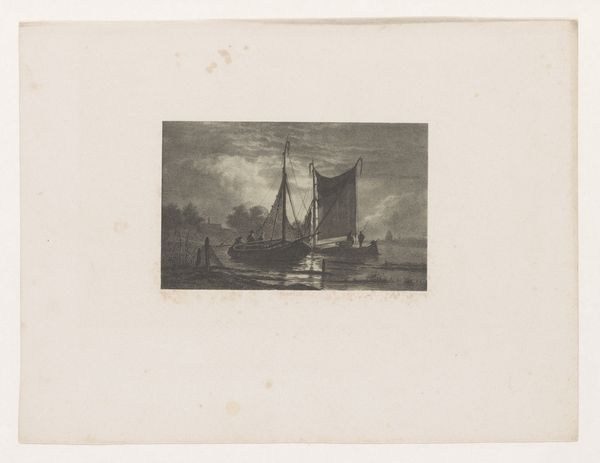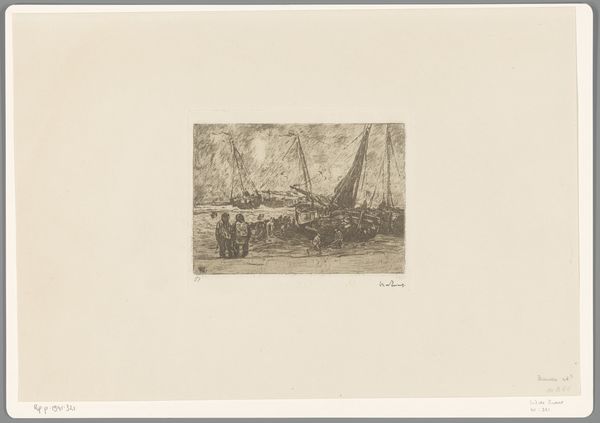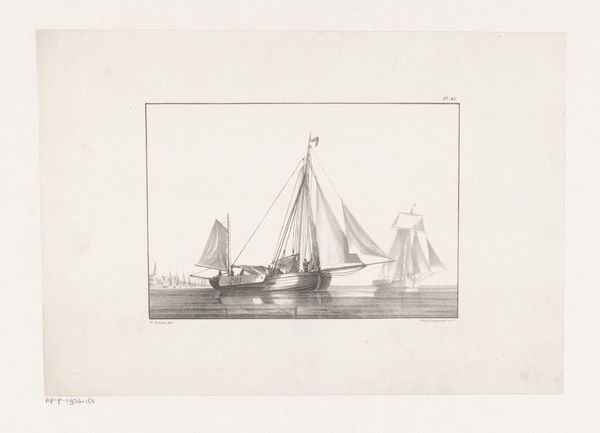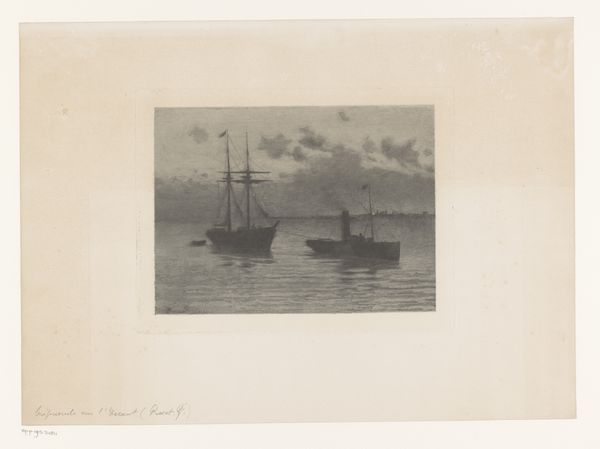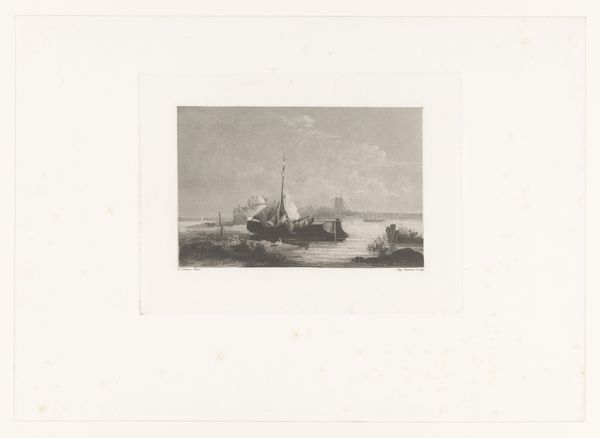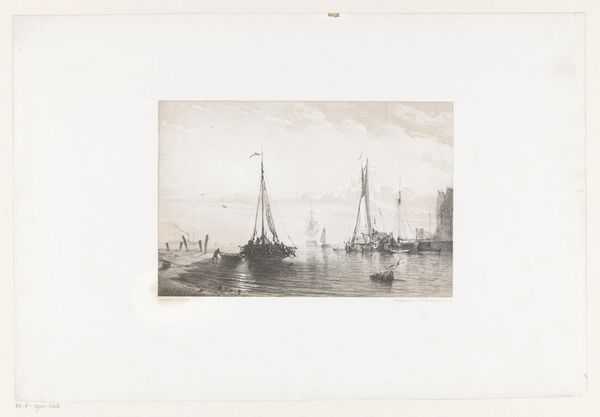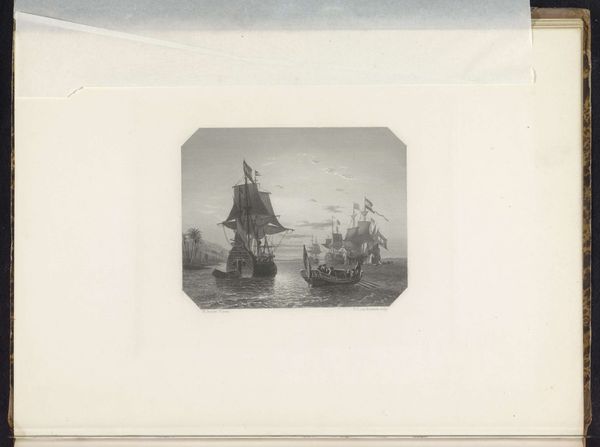
Aangemeerde boten, aan de waterkant bomen en huizen 1870 - 1914
0:00
0:00
willembastiaantholen
Rijksmuseum
Dimensions: height 80 mm, width 120 mm
Copyright: Rijks Museum: Open Domain
Curator: Today, we’re looking at "Aangemeerde boten, aan de waterkant bomen en huizen"—that translates to "Moored boats, trees and houses on the waterfront"—an etching by Willem Bastiaan Tholen. It's estimated to have been created between 1870 and 1914. Editor: The scene is peaceful, almost dreamlike, despite the cityscape elements. It’s so delicate, the detail really pulls you into the waterfront scene. There's a distinct mood evoked by this quiet harbour. Curator: Absolutely, and it's fascinating to consider the printmaking process. Etching allowed Tholen to achieve incredibly fine lines, which, given the period, speaks volumes about craftsmanship and the material's potential for artistry. Look at the textural variations achieved simply through the lines. Editor: And those lines…they carry so much information. The masts of the boats, for instance, reach upward like attenuated church spires. Do you see the symbolic resonance between maritime life and spiritual aspiration in the linear forms used? It is like the masts point the eye towards heaven. Curator: It could be, or it might be just what was in front of Tholen’s eyes when he decided to represent this specific view of Dutch industrial growth. I always find such speculations difficult without corroborating textual clues from the maker. How can we ignore the urban environment created by commerce with the boats representing trade? The etching is as much about the making of the landscape by human hand and commerce, right? Editor: But consider the repetition of vertical elements. It certainly speaks to human intervention in nature, which reinforces the sacred connection of Dutch history and waterways. But is it so simple? Curator: Simplicity can be profound. I mean, the deliberate marks of the artist, creating images for mass circulation, influencing perceptions of labour and progress… it’s powerful! Editor: Agreed. It seems the etching served to not only reflect, but also shape and even subtly mythologize this Dutch waterside experience and environment. Curator: Well, that is perhaps the true alchemy of art. It can bring together history and a culture's symbolic understanding of itself to inform what an artist then materially offers us, right? Editor: Precisely, making even what seems mundane, into something transcendent. Curator: Food for thought!
Comments
No comments
Be the first to comment and join the conversation on the ultimate creative platform.
